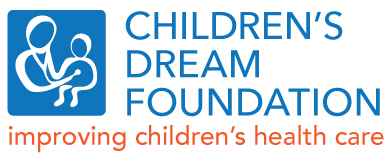 Spring is right around the corner and soon children will be playing outdoors. In the Lower Hudson River Valley, spring also brings back ticks and tick-borne diseases, the best known of which is Lyme Disease.
Spring is right around the corner and soon children will be playing outdoors. In the Lower Hudson River Valley, spring also brings back ticks and tick-borne diseases, the best known of which is Lyme Disease.
The very best way “treatment” for Lyme is not to get it all. That means avoiding tick bites and, when ticks are found, removing them as soon as possible. Ticks like the ground and grass, so it helps to stay on cleared areas away from dense grass or brush. If you know you are going to be in a high risk area hiking or camping, make sure to dress appropriately with long pants and sleeves. The pants legs should be tucked into your socks to prevent any gaps that expose skin. Repellents should be used on clothing and exposed skin, but not the face or hands. For children, the repellent should contain DEET. Over the counter repellents contain safe amounts of DEET. Pets need to be protected as well. Just as important as protecting against acquiring a tick is to regularly check for ticks. Every evening after being in a tick area, you should check your child’s skin for ticks. The Deer tick (Ixodes scapularis) is very small, about the size of a poppy seed, and difficult to see. Large ticks that are easily seen do not transmit Lyme. You will need to be familiar with your child’s skin to be able to recognize any new marks, because the small ticks can easily be missed amongst freckles or other skin markings. Ticks need to be on the body for at least 36 hours to give the Lyme bacteria (Borrelia burgdorferi), so once or twice a day screening will prevent any tick from being on the body long enough to do harm.
If you do notice a tick you will need to remove the tick. There are many suggested techniques for doing so. There is no proven benefit to covering the tick with alcohol or any other substance prior to removal. For small children, using something that numbs the skin may make the removal procedure easier. You can use forceps, a tweezer, or special tick removal instruments to remove the tick. When using anything that squeezes or pinches be very careful not to crush the tick because that can push bacteria from the tick into the skin. Carefully lift the tick directly off the skin, without any twisting. Apply steady traction until the tick is removed. Closely inspect the bite area to make sure there are no remaining tick parts. If any parts remain you can use a sterile needle to scrape the parts out. As with any scratch, the area should then be cleaned. There is no need to save the tick.
There is currently no indication for routine use of antibiotics for tick bites. Any tick bite should be discussed with your doctor to see if there are any special circumstances. The overall chance of getting Lyme, even after a significant tick bite, is still low. Other diseases spread by ticks in our region include Babesiosis, Human Granulocytic Anaplasmosis (HGA, formerly called Ehrlichiosis), and Rocky Mountain Spotted Fever; all much less common than Lyme. Classic early Lyme is characterized by a specific rash called erythema migrans which is an expanding, circular, red rash, usually at the site of the bite, within 7-14 days after the bite. Since many times tick bites are unnoticed, the appearance of an erythema migrans rash should suggest a previously unrecognized bite and current early Lyme. Unfortunately, not all cases of Lyme have the rash. Symptoms such as fever, chills, myalgias, arthralgias, headache, and malaise after a known bite is consistent with any of the tick-borne diseases and should prompt evaluation by a doctor. Lyme has two additional phases of disease if it goes untreated. Early disseminated disease occurs 3-10 weeks after the bite and can present with a diffuse rash, meningitis symptoms such as headache and stiff neck, Bell palsy (facial paralysis), or heart problems such as heart block. Late disseminated disease, weeks to months after the bite, has a striking arthritis, usually of the large joints like the hip or knee. When the rash occurs, the diagnosis may be made clinically, without much testing. When there is no rash, blood testing is required. If meningitis is suspected a spinal tap is necessary. When arthritis is present, the joint should be tapped for fluid. The other tick-borne disease all require specific blood tests to confirm the diagnosis.
Treatment for Lyme depends on the patient’s age and stage of disease. Only rarely is hospitalization needed. The other tick-borne illnesses often produce a greater degree of illness and more commonly are hospitalized. All the diseases have an excellent chance for a full recovery if diagnosed early and treated appropriately.
An excellent resource for up-to-date information on Lyme is the CDC web site: http://www.cdc.gov/ncidod/dvbid/lyme/index.htm.
